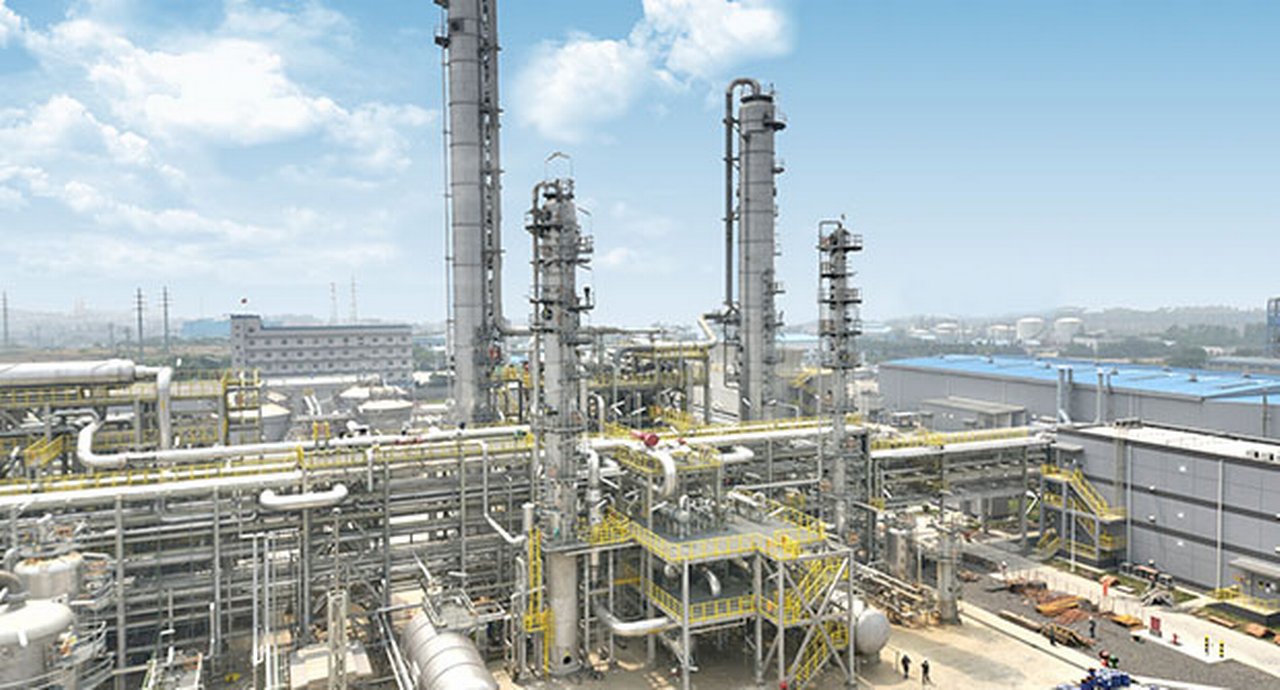14 October 2025
Siemens’ belief in the potential of new technology is reflected in the company’s continued Corporate Treasury evolution. Heiko Nix, Siemens’ Global Head of Cash Management and Payments, updates treasury journalist Graham Buck on the ongoing journey
MINUTES min read
Germany’s economic firepower remains formidable but has been more muted in recent years – as flow reported in ‘Germany at the crossroads’. A new initiative ‘Made for Germany’, which was unveiled on 21 July 2025,1 aims to restore the dynamism, with 105 companies collectively pledging €735bn in investments and flagship projects by 2028 to reinforce the country’s status as Europe’s leading economy.
Spearheading the cross-industry project are four co-initiators: Deutsche Bank, publishing group Axel Springer, PR agency FGS Global and technology company Siemens, one of Germany’s most recognised corporate names. Announcing the initiative alongside his project co-partners, Siemens CEO Roland Busch declared, “Germany needs a new operating system – one focused on growth, technology, and competitiveness. The time for change is now. Government and business must forge a new kind of partnership and take joint responsibility for society.”
“This initiative embodies that spirit of solidarity and stands for a fresh start: with less bureaucracy, and more innovation. Germany is home to world-class companies, has a strong industrial base, and exceptional talent. We have everything it takes to reclaim a leading economic role – especially in digitalisation and artificial intelligence [AI].”
Driving treasury innovation
flow previously reported on how the company’s Corporate Treasury team was an early adopter of new technology. The February 2023 article 'Siemens and Deutsche Bank co-create a virtual account structure with a difference', first published by Treasury Management International (TMI), outlined how it had piloted a virtual accounts structure in 2022. The virtualisation journey has continued in Germany since then, so that a substantial number of accounts could be closed, and the respective payment flow could be centralised with the in-house bank without the need to inform customers about a new IBAN. Additionally, new virtual accounts have been issued such that new physical account openings could be prevented. In a final optimisation step Deutsche Bank and Siemens are now exploring solutions for special payment types so that these can also be streamlined within a virtual accounting structure. In late 2025 the German blueprint for the virtual accounting structure will be introduced to the Netherlands and to Belgium.
The transformation of Siemens’ treasury has been strongly supported by innovations in cash management and payments, led by Heiko Nix, Siemens’ Munich-based Global Head of Cash Management and Payments. With a career that bridges technology and finance, his approach is anchored in four strategic pillars: simplification, automation, acceleration, and innovation.
“I began in Siemens’ telecommunications division, spent many years in IT, and eventually took on responsibility for cash management and payments,” he says. “That background shaped how I see technology: not just as a way to improve treasury processes, but as a catalyst to reinvent how payments work.”
“Technology is not just a way to improve treasury processes, it is a catalyst to reinvent how payments work”
This perspective also shaped the way he approached virtualisation in treasury. In IT, virtualisation unlocked flexibility and efficiency by separating applications from physical servers, making systems easier to manage and scale. In treasury, the equivalent of that hardware is the bank account. By treating accounts as infrastructure that could be streamlined and virtualised, Siemens moved away from managing thousands of physical accounts and instead created a structure that is both simpler and far more transparent.
Another example where Nix’s IT background proved valuable is programmability. The idea itself is not entirely new; static payment instructions have existed for decades. What has changed is that Siemens can now extend this principle much further: instead of a fixed standing order, payments or sweeps can be triggered by any trusted data, from account balances to remittance information. This evolution enables programmable payments and pooling structures that react in real time and operate seamlessly around the clock, without manual intervention.
“Our pioneering partnership with Siemens has been a catalyst for driving innovation”
Neither virtualisation nor programmability were achievements Siemens reached alone. They came to life through close co-creation with banking partners and collaboration with fintechs. One milestone was the virtual account structure, developed together with Deutsche Bank, which simplified and accelerated bank account management at scale. Building on this approach, Siemens Treasury continues to work side by side with partners to shape standards and test emerging technologies. Acting as a co-creator rather than just a consumer explains why innovations such as virtualisation, globally scaled banking APIs or programmable payments often go live here first.
Martin Priebe, Head of Cash Sales Multinational Corporates Germany at Deutsche Bank reflects, “For many years, our pioneering partnership with Siemens has been a catalyst driving innovation and new developments, forging a path towards the treasury of the future.”
Treasury in real time – global, connected, simplified
Back in 2001, Siemens Treasury developed its own cash management solution, finavigate® – at the time a market-leading system that set new standards and was even offered to other corporates. Building it in-house gave Treasury the freedom to adapt directly to Siemens’ global needs and priorities, without depending on any vendor roadmap.
“The functionality is built with exactly the scope we need, with accounting fully embedded, precisely covering the requirements of a global treasury engine,” Nix explains. “This allows us to stay lean, focus on what really adds value – simplification – and evolve quickly as new technologies or business needs arise.”
More than two decades later, finavigate® still forms the backbone of Siemens’ cash management infrastructure. It is directly connected to all internal IT systems that initiate payments and to all bank accounts worldwide, giving Treasury real-time access to all relevant information globally. Continuously extended with APIs and automation, it has become the central hub that enables Siemens to integrate new technologies while ensuring consistent visibility and control across its entire Treasury landscape.
Nix notes four areas where this flexibility has made a tangible difference, both for the Treasury team and for colleagues across Siemens’ businesses:
- Managing liquidity as one
Managing liquidity on a single global platform enables the team to operate as one unit across regions. Built on a common framework, the system is flexible enough to accom-modate country-specific requirements, which is particularly valuable in more complex markets. The combination of global consistency and local adaptability ensures that all teams work with the same real-time picture, managing cash as one global pool of liquid-ity. - Automation unlocking team potential
The automation of routine processes has freed Siemens Treasury from operational tasks such as reconciliations and payment processing. Workflows now guide teams step by step, ensuring consistency and quality while making it easier to switch between tasks. This shift has turned narrow specialists into versatile, resilient all-rounders. Business units also benefit, as direct access to relevant data makes most payment advices redun-dant. - Real-time data as a foundation
By embedding banking APIs directly into finavigate®, Siemens Treasury gains instant ac-cess to more than 70% of its bank account balances and transactions across its global bank network. This provides the real-time visibility needed to react immediately to fund-ing needs or risk exposures. Just as importantly, APIs form the foundation for rule-based and dynamic cash management, enabling programmability and advanced automation as data flows seamlessly between banks, the treasury platform, and Siemens’ internal IT systems. - Scaling beyond core treasury
Building on the existing data, Siemens Treasury has embedded additional workflows di-rectly into the platform, going beyond traditional cash management functions. These in-clude, for instance, global cash application, which now enables end-to-end automation of the process. AI models, trained on the available data, add another layer of automa-tion by recognising payment patterns and processing incorrect or incomplete data. With APIs, the cycle time can be accelerated from three days to intraday, scaling seamlessly across the organisation.
An all-round solution
A raft of awards garnered by the team include Siemens Treasury Center Americas’ win at the 2025 TMI Awards for Innovation & Excellence.2 This recognised a streamlined virtual account structure that Nix says “was really about bringing together all the new technologies we’ve been introducing in recent years into one coherent set-up”.
“He explains, “We combined virtualisation, open-banking APIs, and blockchain deposit accounts with payments-on-behalf and collections-on-behalf principles, all embedded in our in-house bank and integrated into our cash management system.”
A two-step development began with more than 100 physical bank accounts in Siemens’ North America bank account structure collapsed into a single physical bank account, with each entity represented by its own virtual account. “This streamlined payments and collections and gave us a real-time view of liquidity through APIs, without relying on Swift or manual bank portals,” adds Nix.
The impact has been significant, with Nix reporting “24/7 liquidity management, real-time visibility into cash, up to 80% automation of cash application, a significant reduction in workload for account management, and lower bank fees”. He continues, “And importantly, what we have built in the US is more than a local solution; it serves as a blueprint for our global set-up. By proving the model in one of our biggest markets, we now have a template we can scale worldwide to create a truly global, always-on treasury.”
“We then decided to take things a step further with real-time funding,” continues Nix. “Together with other partners3 we carried out a pilot where Siemens issued a commercial paper fully on-chain. Both the issuance and the settlement were synchronised using a delivery-versus-payment mechanism across the two blockchain platforms. The result was striking: the entire process, from trade confirmation to final settlement, was completed in just 93 seconds, so near real-time.
“For us, this was more than just a successful pilot, it illustrated how digital securities could become an integral component of a real-time treasury setup, where funding, settlement, and liquidity management are tightly interconnected.”
Foundation for the future
What does the future journey look like for the payment function at Siemens Treasury? Nix confirms that it will continue to follow the four pillars strategy: first simplify, then automate, then accelerate, and finally innovate. He cites smart payments as a good illustration of how these pillars come together in practice.
“Unlike traditional, batch-driven payments, smart payments are triggered directly by data and business events. Instead of a commercial team initiating a batch at the end of the day, the payment is executed automatically the moment a predefined condition is fulfilled; for example, when goods are delivered, a service is confirmed, or a usage threshold is reached.”
Smart payments can have two applications, he suggests. On the external side, they support the company’s customer and supplier relationships. Payments can flow instantly and reliably as part of the commercial process, eliminating delays, reducing manual steps, and improving the overall experience for counterparties. On the internal side, the same concept applies to intercompany flows, which in Siemens’ case means very high volumes of settlements between its various entities. With smart payments, those flows can be executed automatically via intercompany accounts of the in-house bank, triggered directly by the underlying transaction or event.
“Each of our four pillars plays a role in this,” says Nix. “By simplifying the account structure and processes, we reduce complexity and make automation feasible. By automating, we shift routine and repetitive work to systems and rules. By accelerating, we enable payments to move instantly across currencies and time zones, so are no longer tied to end-of-day or banking cut-off times. And finally, with smart payments we innovate, embedding payments directly into Siemens’ industrial and digital business models.”
He emphasises that for Siemens Treasury, this is more than merely an efficiency play. Instead, the evolution of Siemens’ payment infrastructure is laying the foundation for a truly machine-native economy. “In the future, connected products and machines will not just operate, they will order, bill, and pay. Imagine a 3D printer that automatically pays per design used, a production line that orders and settles for spare parts in real time or building infrastructure that handles usage-based billing machine-to-machine. The work we are doing with smart payments today – all data-driven, event-triggered and fully automated – is laying the foundation for that future.”



